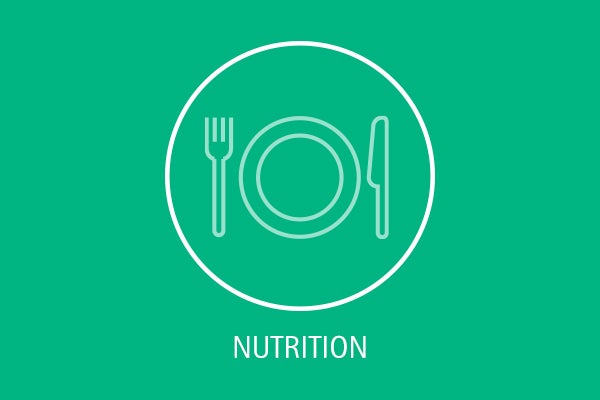How to assess nutritional intake?
Reduction in food intake can result in large caloric deficits over time, which results in weight loss. Therefore, ESPEN guidelines for oncology recommend that reductions in food intake should be recognized and addressed early.1
Attention should be paid to2:
- the percentage of daily deficit (e.g., > 25 %, > 50 %, or > 75 % of energy requirements)
- the expected duration
- the degree of depletion of body‘s reserves
Two groups of methods are used to measure a patient's food intake3:
- quantitative daily consumption methods using recollections or records for measuring the quantity of individual foods consumed over a 1-day period. Estimates of usual intake are also needed to assess the prevalence of inadequate intake.
- methods including dietary history and a food frequency questionnaire. Both techniques include retrospective information on the pattern of food and therefore show the quality of meals.
The ESPEN guidelines for nutrition in cancer patients state that oral energy intake should be assessed at least qualitatively and, if possible, quantitatively by using records of food and fluid, dietary history, food recollections or visual or verbal analogue scales.1
Inadequacy of food intake has been considered present if a patient cannot eat for more than a week or if the estimated energy intake is < 60 % of requirement for more than 1-2 weeks.1 While the measurement of food consumption at the individual level is time-consuming, it is essential in a nutritional assessment.3
Reductions in food intake should be recognized (with defined methods) and addressed early.
Calculating energy requirement
To maintain a stable nutritional state, nutritional intake has to meet the patient's total energy expenditure (TEE) which is the sum of the resting energy expenditure (REE), physical activity and diet-induced thermogenesis.3
As diet-induced thermogenesis is only a small percentage and could be less of a factor, REE should be determined by indirect calorimetry.1 But TEE is also associated with physical activity, which can be measured, e.g., by wearable devices.1
Formula:
Daily energy requirement can be calculated as 25–30 kcal / kg BW, if not measured individually.1
Measuring anorexia and appetite
Anorexia is a frequently observed symptom in patients with cancer and is associated with limited food intake and decreased quality of life. Diagnostic instruments such as the Functional Assessment of Anorexia / Cachexia Therapy (FAACT) questionnaire and the visual analogue scale (VAS) for appetite are validated and widely used in studies of the assessment of anorexia in cancer patients.4,5,6
Measurement of appetite with the Functional Assessment of Anorexia / Cachexia Therapy (FAACT)
The 12 items of the FAACT–A / CS were scored on a 5-point scale (0 = not at all, 1 = a little bit, 2 = somewhat, 3 = quite a bit, and 4 = very much). The FAACT includes 12 questions, like “I have a good appetite” or “The amount I eat is sufficient to meet my needs”, and the scores of negatively worded items were reversed. The total score ranges from 0 to 48, with a lower score (< 24) indicating less appetite.5 The FAACT questionnaire correlates with quality of life.6
Measurement of appetite with a visual analog scale (VAS)
Visual Analog Scale (VAS) for appetite can be completed by patients on the basis of a patient’s feeling regarding appetite during the last seven days. VAS for appetite is a 100 mm line, where 0 mm stands for “I had no appetite at all” and 100 mm for “My appetite was very good." A lower score means less of an appetite. It is assumed that an appetite below 70 mm is moderately reduced and below 50 mm is severely reduced (weak).6
Nutritional impact symptoms
Reduced food intake in cancer patients is not only caused by anorexia. Adverse reactions of anticancer treatment or the cancer itself can impair oral intake and lead to weight loss.
Common nutritional impact syndromes can be1:
- xerostomia
- dysosmia and dysgeusia
- nausea
- vomiting
- denture irritation
- mucositis or thrush
- constipation
- diarrhea
- malabsorption
- adverse drug reactions
- infections
- acute and chronic pain
- psychological distress
It is necessary to know these symptoms because nutritional advice is based on this information.
Common Toxicity Criteria (CTC)
The National Cancer Institute created the Common Toxicity Criteria (CTC) to compare acute toxicities of different treatments. The CTC are a widely used tool that grades the adverse effects of the treatment from a scale of 1–5. The CTC can help to classify the severity of adverse events. This is important since nutritional impact symptoms like diarrhea can be seen from a patient's perspective as very subjective. For example, if the patient has “diarrhea“, the CTC help to classify the adverse event diarrhea as stool frequency < 4 times (CTC Grade 1), stool frequency 4-6 times per day (CTC Grade 2), etc.7
Different versions of the CTC are available at the National Cancer Institute.
Nutritional assessments
Information and tips for you and your patients
References
1 Arends J, Bachmann P, Baracos V, Barthelemy N, Bertz H, Bozzetti F, et al. ESPEN guidelines on nutrition in cancer patients. Clin Nutr. 2017;36(1):11-48.
2 Arends J, Baracos V, Bertz H, Bozzetti F, Calder PC, Deutz NEP, et al. ESPEN expert group recommendations for action against cancer-related malnutrition. Clin Nutr. 2017;36(5):1187-96.
3 Gibson RS. Principles of Nutritional Assessment. 2 nd ed: OXFORD University press; 2005.
4 Muscaritoli M, Lucia S, Farcomeni A, Lorusso V, Saracino V, Barone C, et al. Prevalence of malnutrition in patients at first medical oncology visit: the PreMiO study. Oncotarget. 2017;8(45):79884-96.
5 Blauwhoff-Buskermolen S, Ruijgrok C, Ostelo RW, de Vet HCW, Verheul HMW, de van der Schueren MAE, et al. The assessment of anorexia in patients with cancer: cut-off values for the FAACT-A / CS and the VAS for appetite. Support Care Cancer. 2016;24(2):661-6.
6 Zietarska M, Krawczyk-Lipiec J, Kraj L, Zaucha R, Malgorzewicz S. Chemotherapy-Related Toxicity, Nutritional Status and Quality of Life in Precachectic Oncologic Patients with, or without, High Protein Nutritional Support. A Prospective, Randomized Study. Nutrients. 2017;9(10):1108.
7 National Cancer Institute. Common Terminology Criteria for Adverse Events (CTCAE) Version 4.0 Published: May 28, 2009 [Available from: https://evs.nci.nih.gov/ftp1/CTCAE/CTCAE_4.03/CTCAE_4.03_2010-06-14_QuickReference_5x7.pdf]. Download on 10. Sept. 2020.



